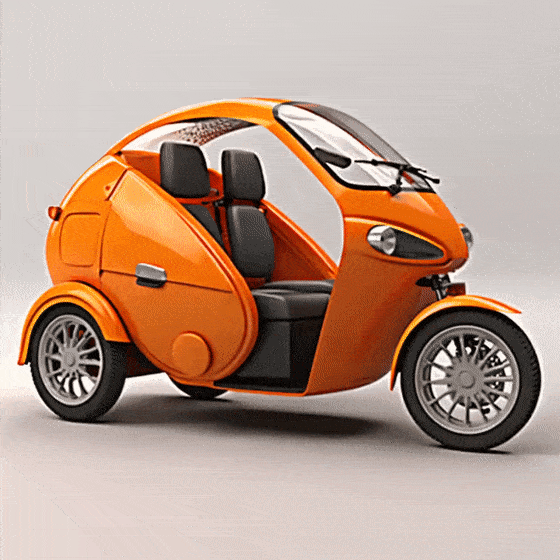Modular manufacturing trends for niche enclosed micro-vehicles
Modular manufacturing is reshaping how niche enclosed micro-vehicles are designed and produced. This article examines modular approaches and their impact on urban mobility, production flexibility, energy systems, maintenance, safety, regulation, and sustainability across different markets.

Modular manufacturing is enabling a new generation of compact, enclosed micro-vehicles that serve niche commuter and urban mobility needs. By separating vehicle architecture into interchangeable modules—chassis, powertrain, body pods, energy packs, and telematics—manufacturers and fleet operators can iterate faster, adapt product lines for diverse accessibility and safety requirements, and optimize maintenance workflows. This shift affects design, supply chains, compliance, and lifecycle sustainability in ways that demand collaboration between engineers, regulators, and service providers.
How does modular design support micromobility and mobility goals?
Modular design allows micromobility vehicles to address varying urban use cases without full redesigns. For instance, a single platform can accept different body pods for commuter, cargo, or accessibility-focused variants, reducing development time and part complexity. This flexibility supports local services and fleet operators who need quick customization for specific routes or customer segments. It also enables simplified logistics: spare modules can be stocked and swapped, lowering downtime and improving fleet availability in dense urban environments.
What advantages does electric powertrain modularity bring?
Electric modular powertrains decouple motor, inverter, and drive components from the vehicle body, enabling commonization across multiple vehicle models. Manufacturers gain economies of scale while retaining the ability to tune performance for last-mile commuter needs or heavier cargo configurations. Standardized interfaces make upgrades simpler—new motor modules or improved controllers can be integrated without reengineering the entire vehicle. This accelerates innovation cycles for electric systems while ensuring compatibility with telematics and fleet management software.
How are batteries and charging handled in modular systems?
Modular battery systems prioritize serviceability and scalability. Swappable battery modules allow quick turnaround in high-utilization fleets and create options for various charging strategies: depot-based fast charging, battery swap stations, or opportunity charging during brief stops. Design choices must balance energy density, thermal management, and safety. Integration with telematics provides state-of-charge and health reporting, enabling predictive charging schedules and optimized route planning for commuter and urban operations while supporting longer asset lifetimes through managed charge profiles.
How do maintenance and telematics integrate with modular manufacturing?
Modularity simplifies maintenance by isolating faults to specific replaceable units, cutting repair time and reducing the need for extensive diagnostic labor. Telematics systems that monitor module health—batteries, motors, brakes—help schedule preventive maintenance and enable remote diagnostics. For fleets, this means improved uptime and predictable servicing costs. Local service networks can be trained to swap modules rather than undertake complex repairs, which supports distributed maintenance models and lowers total cost of ownership for operators.
How do safety, accessibility, and regulations influence modular designs?
Safety and accessibility requirements guide module dimensions, restraint systems, ingress/egress design, and visibility. Modular cabins can be tailored to include wheelchair access, additional safety rails, or enhanced occupant protection depending on regulatory regimes. Compliance must be planned early: certification for a base platform may accelerate approvals for derivative modules, but regulators often require validation for each critical module type. Manufacturers must engage with regional regulators to ensure that modular changes maintain conformity with local vehicle safety and road-use standards.
How do sustainability, customization, fleet management, and insurance shape trends?
Sustainability benefits from modularity through longer asset lifespans, easier upgrades, and reduced material waste: individual modules can be recycled or refurbished without discarding the whole vehicle. Customization enables targeted solutions for commuting patterns and urban logistics, which supports fleet efficiency. Insurers and fleet managers increasingly rely on telematics and modularized risk assessments—data-driven insights about module failures or operating conditions influence premiums and maintenance reserves. Modularity also allows operators to repurpose vehicles as fleet needs evolve, improving asset utilization.
Modular manufacturing for niche enclosed micro-vehicles bridges technical innovation with pragmatic operational needs. By standardizing interfaces and decoupling core systems, companies can offer diverse configurations while keeping costs and complexity manageable. The approach supports faster iteration of electric powertrains, more flexible battery and charging strategies, streamlined maintenance through telematics, and adaptable safety and accessibility features aligned with regulatory requirements. Collectively, these trends contribute to more sustainable, service-oriented urban mobility solutions without relying on full redesigns for each new use case.






